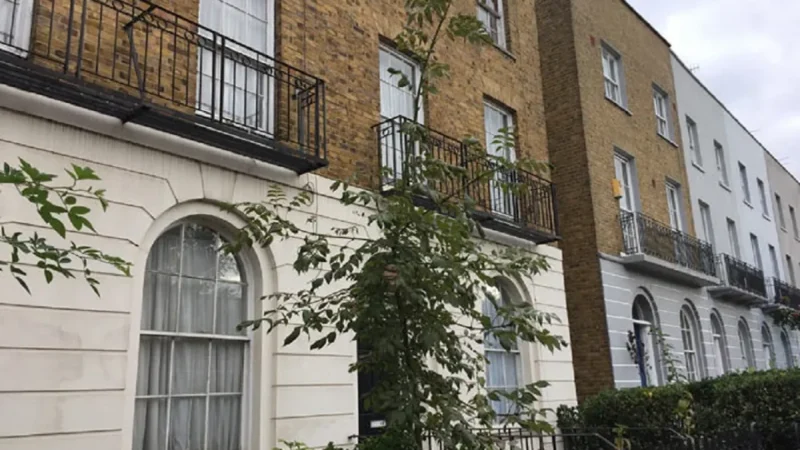How Many Buy-To-Let Mortgages Can I Have?

Table of Contents
ToggleHow many buy-to-let mortgages can I get in the UK -
When investing in property, one question often arises about how many buy-to-let mortgages a person can have? This is an important question for property investors to consider as it affects their ability to grow their property portfolio and achieve their investment goals. In this article, we will explore the answer to this question in more detail and provide some useful information for property investors.
Understanding Buy-to-Let Mortgages -
Buy-to-let mortgages are specialized mortgage products designed for individuals who want to purchase a property to rent it out to tenants. The rental income generated from the property is used to pay off the mortgage and provide additional income for the landlord. Buy-to-let mortgages have become increasingly popular in recent years as more people are looking to invest in property to generate income.
Buy-to-let mortgages are similar to traditional mortgages in that they involve borrowing money from a lender to purchase a property. However, there are some key differences between the two types of mortgages. For example, buy-to-let mortgages typically have higher interest rates and require larger deposits than traditional mortgages. In addition, lenders will commonly require evidence that the rental income generated from the property is sufficient to cover the mortgage payments.
Another critical difference between buy-to-let and traditional mortgages is how affordability is calculated. Whereas traditional mortgages are based on the borrower’s income and outgoings, buy-to-let mortgages are based on the expected rental income from the property. Lenders will typically require that the rental income is at least 125% of the mortgage payments.
Overall, buy-to-let mortgages can be a good option for investing in property and generating additional income. However, it is important to consider the risks involved carefully and to seek professional advice before taking out a buy-to-let mortgage.
Factors Affecting the Number of Buy-to-Let Mortgages
The number of buy-to-let mortgages a person can have is affected by several factors. These factors include:
- Affordability:Affordability is a key factor determining how many buy-to-let mortgages you can have. Lenders will assess your income, outgoings, and credit history to determine how much you can borrow. Lenders will also consider the rental income from each property if you have multiple mortgages. Lenders usually require that the rental income covers at least 125% of the mortgage repayments.
- Deposit:The size of your deposit also affects the number of buy-to-let mortgages you can have. Most lenders require a minimum deposit of 25% for buy-to-let mortgages. If you have multiple mortgages, you will need a larger deposit for each one. This can make it difficult for some investors to get approved for multiple buy-to-let mortgages.
- Credit history:Your credit history is important when applying for a buy-to-let mortgage. Lenders will assess your credit score to determine your ability to make repayments on time. If you have a poor credit history, getting approved for multiple buy-to-let mortgages can be difficult.
- Rental income:The rental income from your buy-to-let properties is another factor that affects how many buy-to-let mortgages you can have. Lenders usually require that the rental income covers at least 125% of the mortgage repayments. If you have multiple properties, the rental income from each property will be considered.
- Lender policy:Each lender has its policy on how many buy-to-let mortgages it will lend to an individual. Some lenders may be willing to lend to investors with multiple properties, while others may have strict policies on the number of mortgages they approve.
- Experience:Some lenders may require that investors have experience managing rental properties before approving multiple buy-to-let mortgages.
- Type of property:The type of property you buy can also affect the number of buy-to-let mortgages you can have. Some lenders may be more willing to lend on certain properties, such as flats or houses in multiple occupations (HMOs).
It is important to note that each lender has policies and criteria for approving buy-to-let mortgages. It is always recommended to seek advice from a financial advisor or mortgage broker before applying for a buy-to-let mortgage.
Limits Set by Lenders and the Prudential Regulation Authority (PRA)-
In addition to lender limits, it is important to consider your financial situation and whether you can realistically manage multiple buy-to-let properties. Being a landlord can be time-consuming and sometimes stressful, and ensuring that you have the time, resources, and expertise to manage your properties effectively is important.
It is also important to consider the risks involved with buy-to-let investing, such as the potential for property values to fall, tenants defaulting on rent payments, and unexpected maintenance and repair costs. Having a diverse portfolio of properties in different locations and with other tenants can help to mitigate some of these risks.
The number of buy-to-let mortgages you can have is affected by various factors, including the limits set by lenders and the PRA, your financial situation, and the risks involved with buy-to-let investing. It is essential to research, seek professional advice, and consider all of these factors before buying additional buy-to-let properties.
Tips for Increasing the Number of Buy-to-Let Mortgages
Regarding the number of buy-to-let mortgages you can have, there are limits set by individual lenders and the Prudential Regulation Authority (PRA). The PRA is the regulator responsible for supervising banks, building societies, credit unions, insurers, and major investment firms in the UK. The PRA has set guidelines for lenders to ensure they lend responsibly and not expose themselves or their customers to undue risk.
Under the PRA guidelines, lenders must consider a borrower’s entire portfolio of buy-to-let properties when assessing their eligibility for a new buy-to-let mortgage. If you already have multiple buy-to-let mortgages, a lender may be less likely to approve you for another one, as you may be deemed to be taking on too much debt. Lenders will also look at your income, expenses, credit score, and the rental income you will likely receive from the property.
Some lenders have set limits on the number of buy-to-let mortgages they will offer to a single borrower. For example, some lenders will only offer up to four buy-to-let mortgages per borrower, while others may offer up to ten. It is important to shop around and compare the terms and conditions of different lenders to find the best deal for your situation.
While there are limits on the number of buy-to-let mortgages an individual can have, there are ways to increase this limit. Here are some tips:
- Improve your credit score:A good credit score is essential when applying for a mortgage. Lenders look at your credit history to determine your creditworthiness, so it’s important to maintain a good credit score. Pay your bills on time, keep your credit utilization low, and avoid applying for too much credit at once.
- Build up equity:The more you have in your existing properties, the more likely you will be approved for additional mortgages. If you have more assets, lenders will see you as less of a risk.
- Choose the right properties:When purchasing properties, choose those likely to generate high rental yields. Lenders will be more likely to approve a mortgage if they see that the property has the potential to generate significant rental income.
- Work with a specialist mortgage broker:A specialist broker can help you find lenders more likely to approve multiple mortgages. They can also help you navigate the complex process of applying for a mortgage and ensure that you’re getting the best deal.
- Consider using a limited company:If you’re already at your limit for personal buy-to-let mortgages, consider setting up a limited company to purchase additional properties. This can be a more tax-efficient way of managing your portfolio, and lenders may be more willing to approve mortgages to limited companies.
- Have a solid business plan:Lenders will want to see that you have a solid method for managing your portfolio and generating rental income. Ensure you have a business plan outlining your strategy for selecting properties, managing tenants, and generating income.
Following these tips can increase your chances of being approved for multiple buy-to-let mortgages and growing your property portfolio. However, it’s important to remember that there are still limits to how many mortgages you can have, and it’s essential to stay within your means and not take on too much debt.
Conclusion -
In conclusion, the number of buy-to-let mortgages one can have depends on various factors, such as the lender’s policy, the borrower’s credit score, income, and the value of the properties. The Prudential Regulation Authority (PRA) has also set limits on the number of mortgages an individual or company can have. However, with proper financial management, increasing income, and a good credit score, increasing the number of buy-to-let mortgages may be possible. It is essential to seek professional advice from a mortgage broker or financial advisor to determine the best action for your circumstances.






